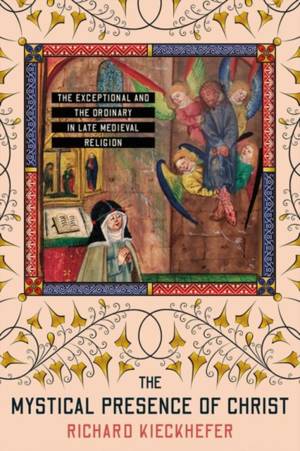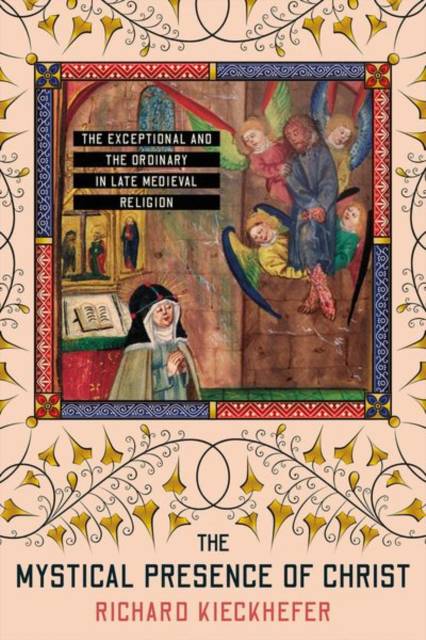
- Retrait gratuit dans votre magasin Club
- 7.000.000 titres dans notre catalogue
- Payer en toute sécurité
- Toujours un magasin près de chez vous
- Retrait gratuit dans votre magasin Club
- 7.000.0000 titres dans notre catalogue
- Payer en toute sécurité
- Toujours un magasin près de chez vous
The Mystical Presence of Christ
The Exceptional and the Ordinary in Late Medieval Religion
Richard KieckheferDescription
The Mystical Presence of Christ investigates the connections between exceptional experiences of Christ's presence and ordinary devotion to Christ in the late medieval West. Unsettling the notion that experiences of seeing Christ's figure or hearing Christ speak are simply exceptional events that happen at singular moments, Richard Kieckhefer reveals the entanglements between these experiences and those that occur through the imagery, language, and rituals of ordinary, everyday devotional culture.
Kieckhefer begins his book by reconsidering the "who" and the "how" of Christ's mystical presence. He argues that Christ's humanity and divinity were equally important preconditions for encounters, both exceptional and ordinary, which Kieckhefer proposes as existing on a spectrum of experience that moves from presupposition to intuition and finally to perception. Kieckhefer then examines various contexts of Christ manifestations--during prayer, meditation, and liturgy, for example--with attention to gender dynamics and the relationship between saintly individuals and their hagiographers. Through penetrating discussions of a diverse set of texts and figures across the long fourteenth century (Angela of Foligno, the nuns of Helfta, Margery Kempe, Dorothea of Montau, Meister Eckhart, Henry Suso, and Walter Hilton, among others), Kieckhefer shows that seemingly exceptional manifestations of Christ were also embedded in ordinary religious experience.
Wide-ranging in scope and groundbreaking in methodology, The Mystical Presence of Christ is a magisterial work that rethinks the interplay between the exceptional and the ordinary in the workings of late medieval religion.
Spécifications
Parties prenantes
- Auteur(s) :
- Editeur:
Contenu
- Nombre de pages :
- 382
- Langue:
- Anglais
- Collection :
Caractéristiques
- EAN:
- 9781501765117
- Date de parution :
- 15-09-22
- Format:
- Livre relié
- Format numérique:
- Genaaid
- Dimensions :
- 152 mm x 229 mm
- Poids :
- 716 g

Les avis
Nous publions uniquement les avis qui respectent les conditions requises. Consultez nos conditions pour les avis.






